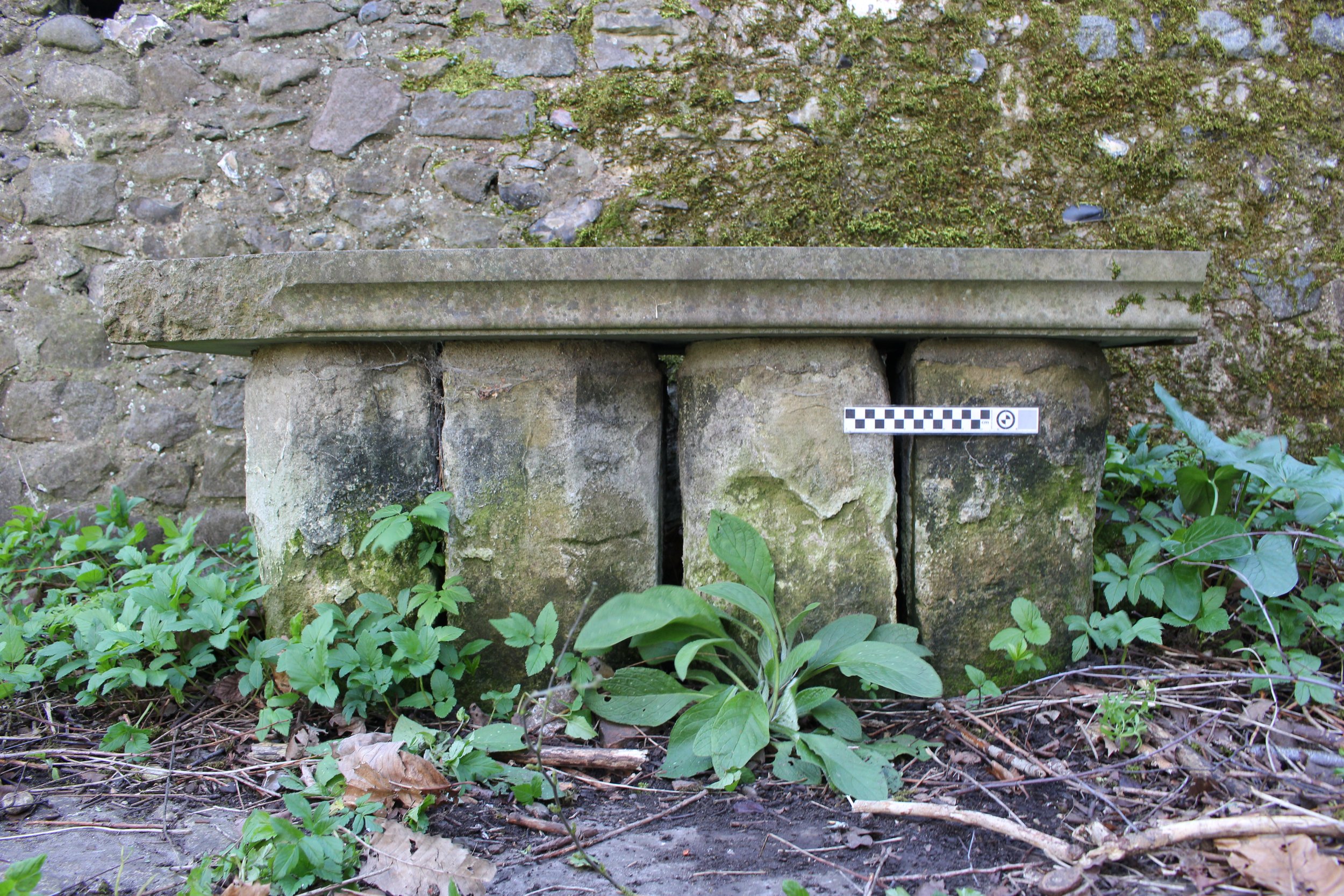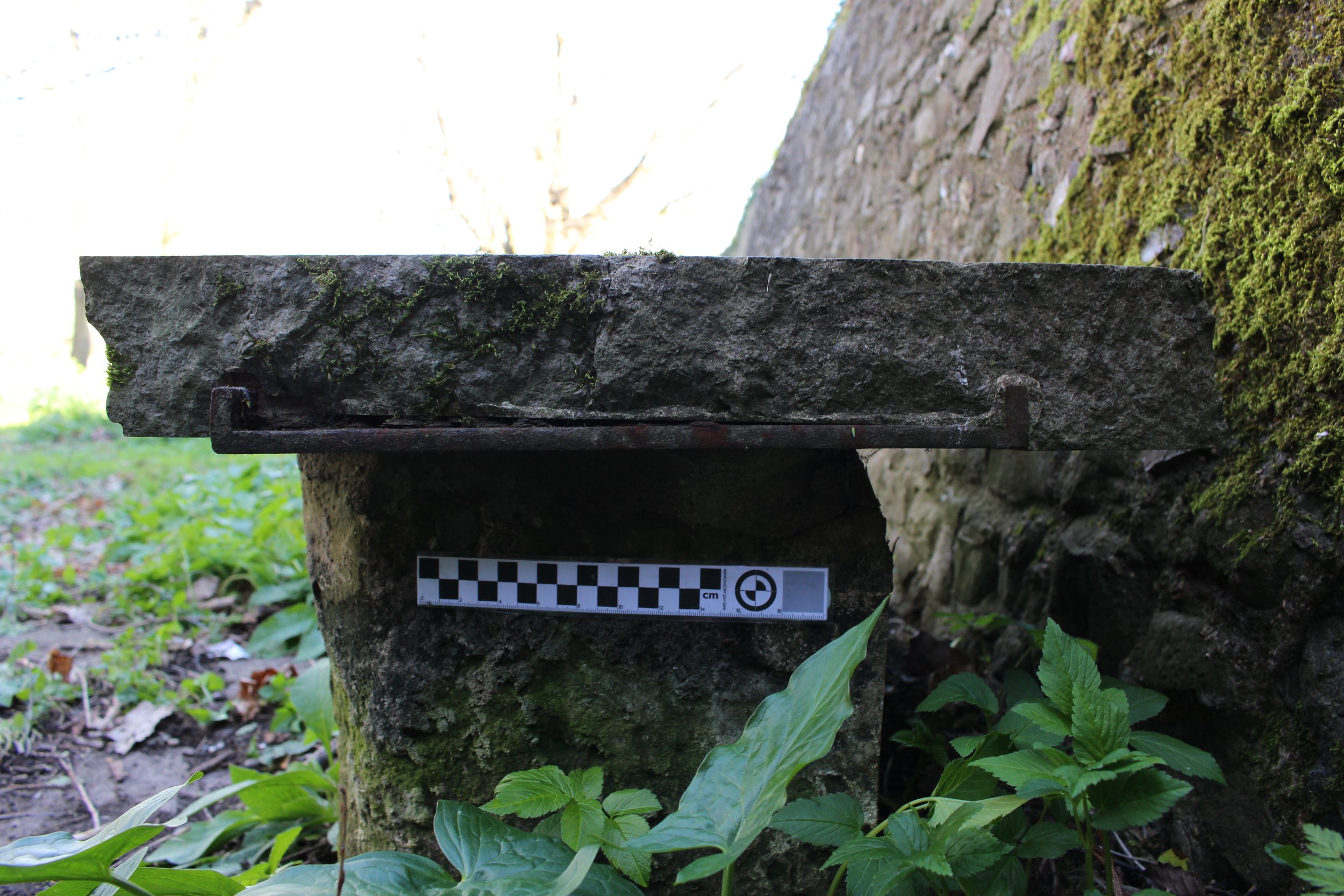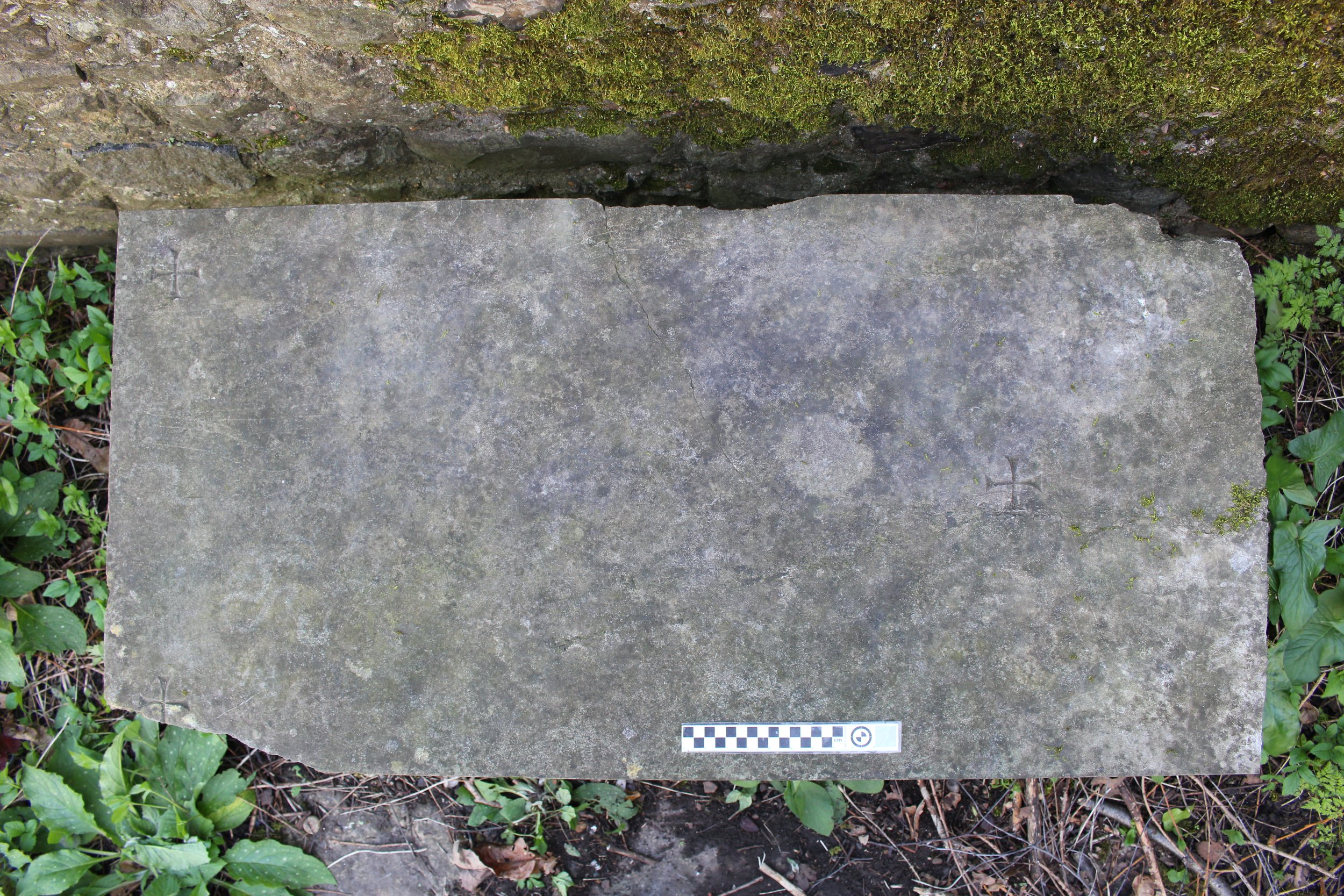Altar slab, 19th century
/A previously forgotten altar slab was identified reused as a garden feature in King’s Orchard.
In autumn 2016 the cathedral gardener Scott Norwood Witts sat for lunch on a stone bench in the corner of King’s Orchard, noticing three incised consecration crosses on the top of the large stone ‘seat’ of the bench and subsequently identifying this as a two-thirds of a full-length fragment of an altar slab.
The slab now measures 561mm in width, 1140mm in length and 84mm thick. The placement of the centre cross 891mm from the surviving edge revealed its original length would have been 1782mm. The three remaining consecration crosses all measure 52mm in diameter. It is composed of a Jurassic limestone, possibly Purbeck based on the small inclusions to large inclusions ranging from 1 to 10mm in length.




One edge features a cyma-recta moulding, which we will presume to be front facing, the other surviving edges are dressed but plain. There are two 15mm diameter 25mm deep holes on the underside of the remaining corners for fixing the slab to its supporting frame, likely of wood. The back hole is 29mm distant from the back edge and 9mm from the side, the front hole is 12mm from the side edge and 60mm from where the front edge would have extended before breakage.
A corroded but in-situ iron brace 355mm in length and 26mm in width has been used as a repair along the broken edge, held in place with molten lead, perhaps following a natural fault in the stone bed. The front left corner has broken away, as has a small section midway along the back edge, with a crack running from this break two-thirds the width of the slab. The fragment now sits atop four carved blocks, themselves atop a modern rough flagstone pavement, both built seemingly in respect of the current length of the slab, suggesting the break occurred before its being moved to the current position.
The stones on which the slab was once fixed suggest it was moved to its current position sometime in the twentieth century. Works to replace Sir Gilbert Scott-era repairs from the 1950s on resulted in an assortment of shaped fragments dispersed around the Precinct Gardens and reused as garden features. Parts of the flowerbeds and garden borders of the old Deanery include other stones reused from 20th-century repairs of Scott-era work.
The reused fragments, or spolia, were recorded photographically and in 3D during a survey of fragments throughout the Cathedral and Precinct in 2021. At this time, loose stones around the Precinct were gathered for potential future reuse. The remaining third of the slab was identified in 2021 propped against a modern fence in the garden of the recently refurbished new Deanery.
This fragment has been afforded more protection from the weather than the two-thirds fragment reused as a bench, with crisp details and an abundance of fossils of diverse forms. Jurassic limestones were prized in medieval Europe, selected to symbolise life and nature. Some associated fossils, often found high on cliff faces and even atop mountains, of evidence of the biblical deluge flood.
The minimal wear or weathering on the protected parts of the slab indicate an Early Modern date for its origin, with its style suggesting a 19th-century Gothic Revival piece. It was perhaps installed around the time of Lewis Nockall Cottingham, c.1825, and repaired later in the 19th century.
Both fragments are currently being cleaned and conserved by a student at the London City & Guilds Art School whilst an altar table is constructed ready for their return next year. We are excited to consider opportunities for its reuse as an altar.
Jacob Scott and Graham Keevill, Rochester Cathedral Archaeologist
Cited works
Keevill, G. (2012) Adrian’s Wall. The Friends of Rochester Cathedral Annual Report 2012. Rochester: The Friends of Rochester Cathedral.
Hope, W. H. S. (1898) The Architectural History of the Cathedral Church and Monastery of St. Andrew at Rochester. Archaeologia Cantiana, 23.15.
A small collection of Early Modern heralds and figures originating from Cathedral memorials.






